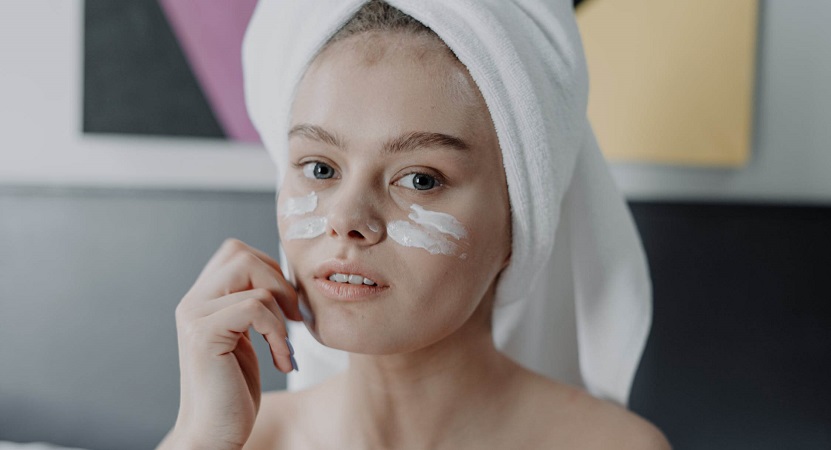How often do you take a moment to think about the skin around your eyes? Chances are not as often as you should; most of us only begin to take notice of our eye skin when it starts showing undesirable changes, such as signs of exhaustion or aging. Caring for the skin around our eyes is easier than we think — and here’s how to do it naturally with natural and organic eye cream.
In this article we discuss the following:
- What is Natural Eye Cream?
- Reasons to Use Natural Eye Cream
- Chemicals in Ordinary Eye Cream to Avoid
- Best Natural Eye Cream Brands
- DIY Natural Eye Cream at Home
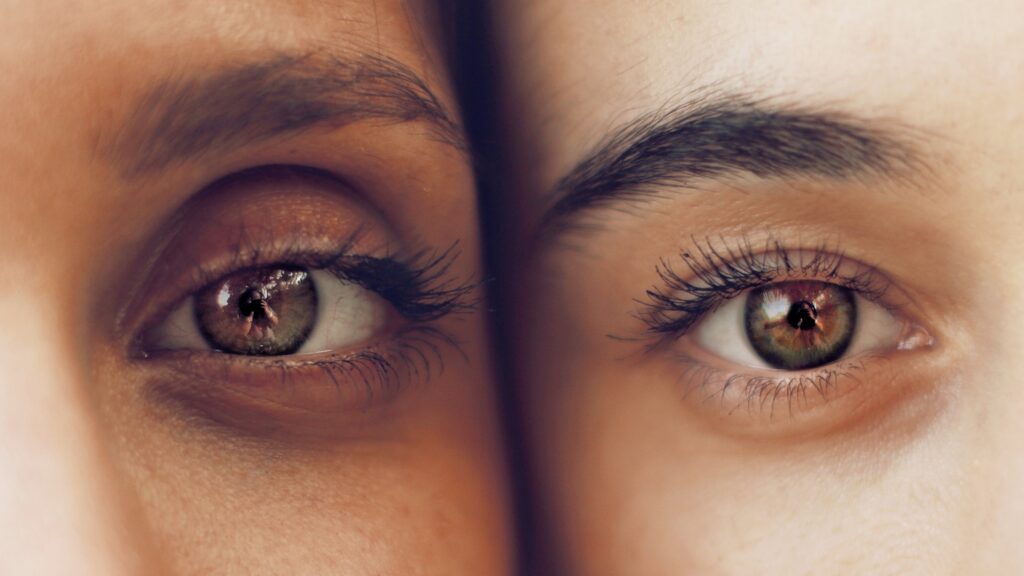
What is Natural Eye Cream?
For too long the word ‘natural’ was used as a marketing gimmick by big brand manufacturers of self-care products. It became trendy to be “natural”, and corporations got away with using this phrase on any product so long as it contained even one plant derived ingredient amoungst the chemicals from which the product was mostly made.
‘Natural’ hits differently these days, as consumers seek out pure, botanically-derived formulas that can live up to their natural claims. Common misconception regards today’s natural skincare products as elitist or inaccessible, but when one takes the time to delve deeper, it’s evident that this is not the case at all.
Natural skincare products, such as natural eye creams, are so accessible that there’s probably one sitting in your kitchen pantry as we speak — and you don’t even know it! Read on for some at home natural eye cream DIY tricks.
Store-bought natural eye creams are skincare formulas that have been made using entirely pure, botanically-derived compounds that are found abundantly on the Earth. They are free from harmful chemicals that pose risks to not only our skin, but also our long term health.
But switching to natural beauty products is expensive, right? Wrong. At this point, we are in a bull run with the beauty industry being overwhelmed with demand for more sustainable, pure products that give their chemical counterparts a run for their money.
Because the ingredients used to make natural eye creams come from botanicals, the creams can usually be classified as either vegan, organic, or both. We’ll dissect the specifics of each of these as they pertain to eye creams a little later. For now, know that an organic beauty product isn’t automatically vegan, nor is a vegan skincare product automatically organic.
As it stands, the market for natural eye creams is spoiled for choice. Researchers have spent the better part of the last two decades closely observing the effect of different botanicals on the skin around the eye, which happens to be very different in compound and reactivity to the skin on the rest of the face.
Reasons to Use Natural Eye Cream
For someone who has never paid natural skincare products much mind, switching over to an entirely natural beauty regime is an exciting process. It’s like a blank slate, a fresh start, with so much to learn, test and love.
A big reason to make the jump from chemical to natural is definitely the environment. Few people realize just how much toxic carbon emissions are pushed out into our atmosphere in order to refine and process chemical ingredients. These emissions go on to affect the integrity of our planet’s ability to regenerate. They also contaminate the air that we pull back into our bodies with every breath; it’s a double edged sword.
The first step to remedying this issue is accepting the fact that the change starts with us, the consumer. Big brands are not going to take the environment into their own hands until it becomes profitable to do so, and we are the ones who retain the power to fuel that kind of demand through the decision we make as to where we direct our money.
If healing the planet you call home isn’t enough reason to switch to natural skincare, perhaps healing the vessel that your soul calls home is. Believe it or not, the body is directly affected by each and every chemical that is placed onto or into it. The exact side effects may take their time to manifest physically, but the repeated use of chemicals on the skin is a process of slow, inevitable decay in health.
You see, absorbing products through the skin is the most direct way for any substance to reach the bloodstream without physically breaking through the surface to get there. The products that you use on your skin will eventually put trace amounts of certain ingredients into your blood; what happens after this fact is out of our hands.
Chrystal Johnson from Happy Mothering was diagnosed with melanoma at 28, and says she has learned a lot about clean beauty since then. Johnson notes that “after countless hours of research, I will only use natural beauty products in general, but especially when it’s a product that’s near sensitive areas like eyes.”
The good news is that a simple shift into a more natural regime can actually lead to beneficial plants and minerals being absorbed into the body instead — including through our eye creams! Think of copper bracelets, for example, and, as some health practitioners believe, the way by which the skin beneath them actually turns green from absorbing the copper molecules.
The skin around our eyes is much like the skin on our wrists: incredibly thin, sensitive and prone to sagging (if you’re now closely inspecting your wrist skin — we’re sorry!). Regular face moisturizers can be beneficial to eye skin, but they usually aren’t molecularly small enough to settle into the tiny pores surrounding the eyes.
Natural eye creams are devoid of the chemicals used to thicken, whiten and plump ordinary eye creams, leaving them supple enough to penetrate through the smallest pores of the face.
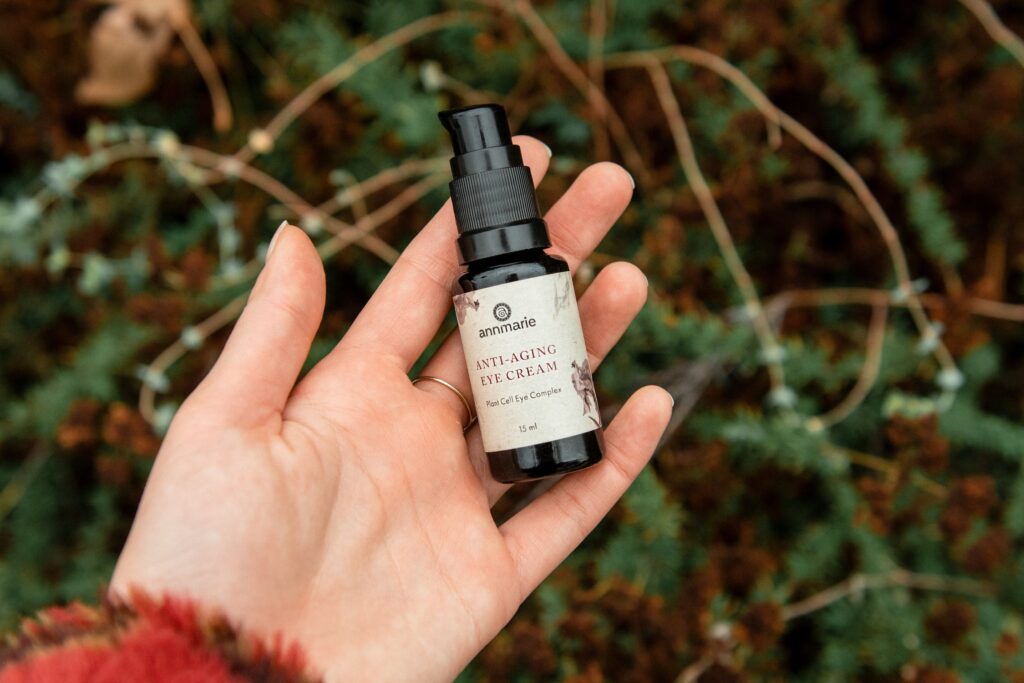
If a vegan or organic lifestyle is something you adhere to, it’s relatively easy to find a suitable natural eye cream that does the same. “Natural” is somewhat of an umbrella term for skincare products that are either plant derived, made using organic ingredients only, or totally cruelty free — or all. A product’s individual production process will determine how the brand can market the formula.
Opting for an organic product is always preferable. We find that it’s all good and well to make use of products that are free of added chemicals, but non-organic ingredients derived from botanicals also have the potential to leave trace-chemicals in the final product, including pesticides and growth steroids. These are substances that we don’t want on the food we eat, so we shouldn’t accept them in the products that we put onto our face.
Organic skincare virtually guarantees a cleaner, more environmentally friendly production process.
Vegan skincare, on the other hand, goes the extra mile and ensures that no sentient beings are harmed in the production process of their formula. Vegan natural eye creams are some of the best and most gentle products on the market if you are a lover of animals.
To determine whether your natural eye cream qualifies as organic or cruelty-free, simply inspect the label of the product for the small logo that declares the status. Most brands are incredibly proud of being classed as organic or vegan, and will make it very clear to potential buyers.
Chemicals in Ordinary Eye Cream to Avoid
It’s time we stop acting shocked by the fact that big brands rarely have the well-being of the consumer in mind. The goal is, and always will be, profit; this is simply how the incentive system is stacked in consumerist and capitalist societies in the absence of proper regulations.
Manufacturing skincare and beauty products using chemicals is a process that is much cheaper in comparison to harvesting and refining botanicals. It has taken decades for scientists to monitor the long term damage that daily contact with skincare chemicals can have, and only now are we really starting to receive and understand the data.
Take some time to examine the ingredients in your ordinary eye cream and other skincare products. If any of the following are present, you might want to reconsider the brand in question.
Parabens
Denmark recently made using parabens on anyone under the age of three years old illegal. The reason is that parabens are chemicals with the unique ability to mimic estrogen when digested by the human body. They can wreak havoc on one’s natural hormone production, causing long term damage and putting one at risk of mutated cells.
These cells can eventually lead to cancer; skin and breast cancer in particular. The parabens themselves have been found in the blood of patients, causing widespread panic about the lack of regulation within the beauty industry.
This led to a global trend for products to proudly proclaim themselves as being “paraben free”. Customers were catching on, and demanding safer products for themselves and their families.
Parabens are added to beauty and skincare products as preservatives. They extend the shelf life of products that would otherwise spoil or rot much sooner.
Hydroquinone
Eye creams that claim to target pigmentation around the eyes will almost always contain a significant amount of hydroquinone. It acts as a skin lightening agent; in other words, a bleach for human skin.
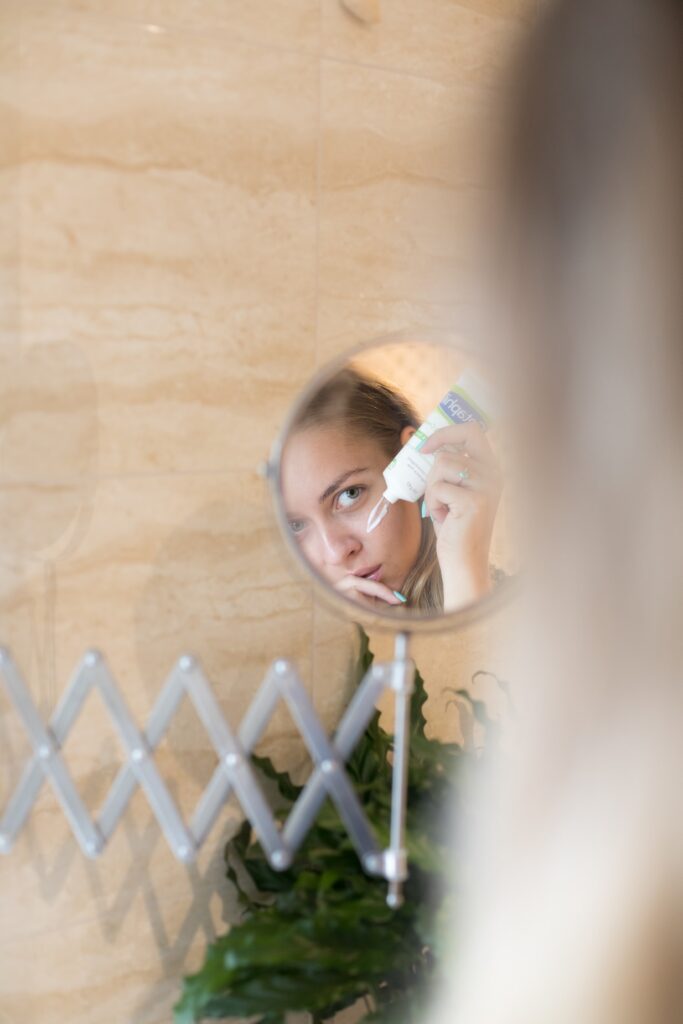
Hydroquinone targets the presence of melanocytes in one’s facial skin. These are the cells that are responsible for melanin production, which in turn gives our faces their unique colors and pigment patches. People with higher counts of melanocytes are more prone to freckles and blemishes, while those with lower counts tend to burn in the sun very easily.
For people who have been trying to get the pigment around their eyes under control for quite some time, hydroquinone seems like a dream cream. Unfortunately this ingredient is not regulated within the industry at all, and long term use of it on the face has actually been shown to cause permanent damage to the body’s natural production of melanocyte, in turn leading to even worse pigmentation around the eyes over time.
Petrolatum
Petrolatum is a common ingredient in beauty products, particularly those that specifically target dry skin. Refined petrolatum actually isn’t too harmful as a substance, but it is rare for a manufacturer to use this more natural source.
Cheap imitations have saturated the industry, leaving no reason for brands to pay top dollar just for the refined version. The industry, in this regard, is not regulated, and brands are free to use the mock versions of petrolatum without consequence.
Most brands use petrolatum as their key moisturizing ingredient, but the truth is that mock petrolatum has no actual moisturizing abilities of its own. Instead, it seals off all existing moisture in the skin and creates a barrier between it and the outside world. This gives the illusion of extremely hydrated eye skin, but beneath the surface the opposite is true.
Phthalates
Phthalates are what give eye creams their pliability and flexibility. Being able to gently spread the cream underneath each eye socket, without clumping or hardening in the process, is something that occurs due to intense chemical additives.
What’s interesting is that research has shown phthalates do their most harm to men and children. Once absorbed into the bloodstream, they target one’s natural hormone production and the reproductive system. They have also been linked to conditions such as ADHA, diabetes and even cancer.
What’s even more interesting is that avoiding phthalates in skincare products is almost impossible without switching to an all natural range, including eye creams. Manufacturers are not required by law to state when phthalates are used in a product. It’s rarely on the bottle, but it’s always in the cream.
Fragrances
We’ll admit, the smell of a skincare or beauty product is one of the first things we judge, especially when said products are being applied so close to the nose.
An attractive smelling eye cream is immediately more desirable to the user, but do you know how many potent chemicals are required to mask the smell of other just as potent chemicals?
The answer is more than you want to know, and we like to use the analogy of a paint shop to put things into perspective. Imagine an eye cream with no added “fragrances”, simply each individual chemical offering a symphony of stenches in all their glory; this is similar to the almost choking, toxic smell that sweeps through most paint shops when you first walk in.
Now imagine the amount of counter chemicals required to mask those toxic fumes. It takes a great deal of counter chemical power to hide the powerful aroma of commonly used ingredients such as parabens and phthalates. Most “fragrances” are coal-derived, which makes them incredibly harmful to any individual with an already impaired respiratory system.
Natural fragrances are an option to all who manufacture skincare and beauty products; however they cost a lot more and end up cutting into profits which, as we know, is a massive no-no for most big brands.
Best Natural Eye Cream Brands
If you’re ready to make the switch to a more natural, gentle eye cream, we’ve got some suggestions in mind. We spend a lot of time scouring the market for the best natural products that actually work.
If supporting a cruelty-free brand is of importance to you, take note of those which make their vegan status known. Remember, not all pure eye cream is automatically vegan-friendly!
Best Eye Cream for Dark Circles
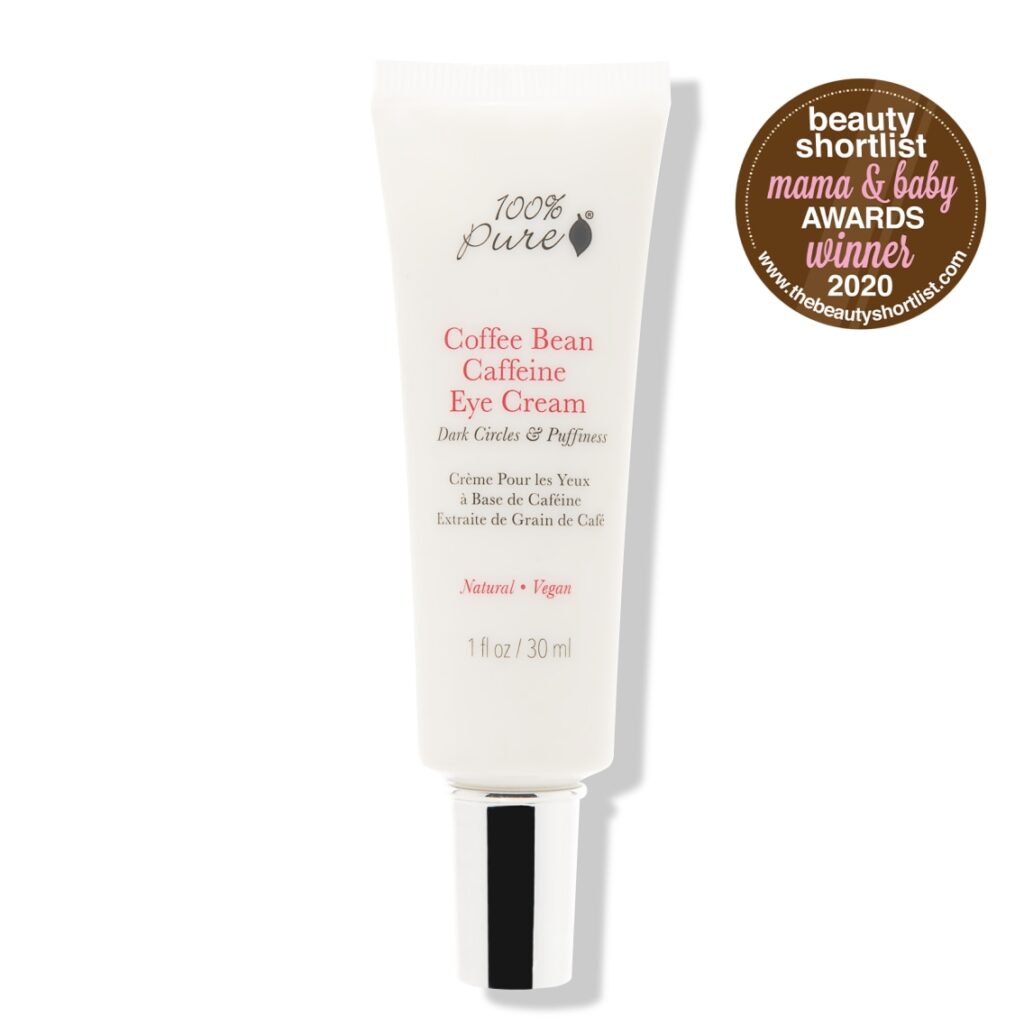
100% Pure Coffee Bean Caffeine Eye Cream
Waking up to bags under one’s eyes is one of the most common reasons that people begin to seek out an effective eye cream to incorporate into their morning routine.
This 100 pure eye cream has drawn inspiration from the coffee bean and green tea leaf in their ability to wake up anyone from a sleep state. The skin under the eyes is one of the last bodily regions containing nerve endings to wake up in the morning, which often results in what we like to refer to as ‘bags’ or puffiness.
This eye cream is not organic, but it is vegan and cruelty free. You won’t find any animal products used as ingredients, nor does the brand test on animals.
Best Eye Cream for Wrinkles
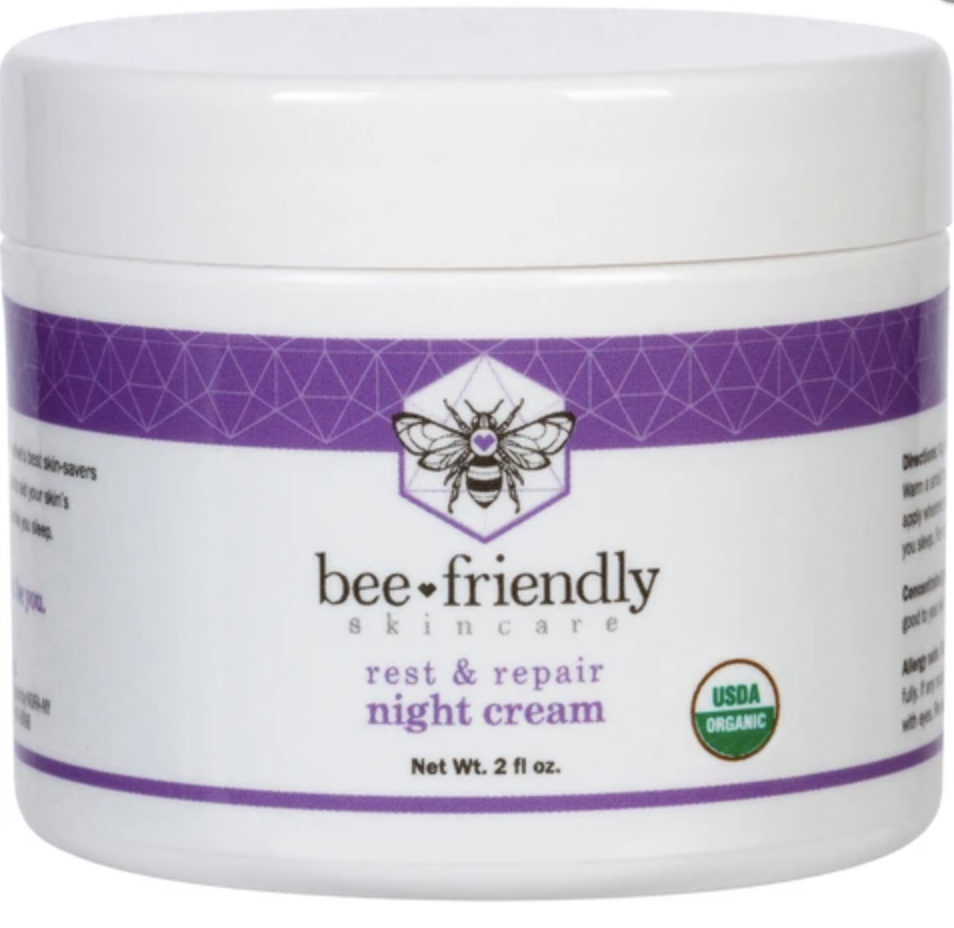
BeeFriendly Skincare Rest & Repair Night Cream
This next eye cream doesn’t get the vegan stamp of approval, but it is completely natural and organic — and oh, so effective.
The formula is comprised of sustainably sourced beeswax, honey, olive oil and lemon. They take powerful action against existing wrinkles by working to produce new collagen to ‘fill the gaps’. They also work to delay or prevent new wrinkles from appearing in future.
One pot of cream goes a long way, making this an economical investment. If we have to choose, this would be our pick for best organic eye cream.
Best Eye Cream for Bags
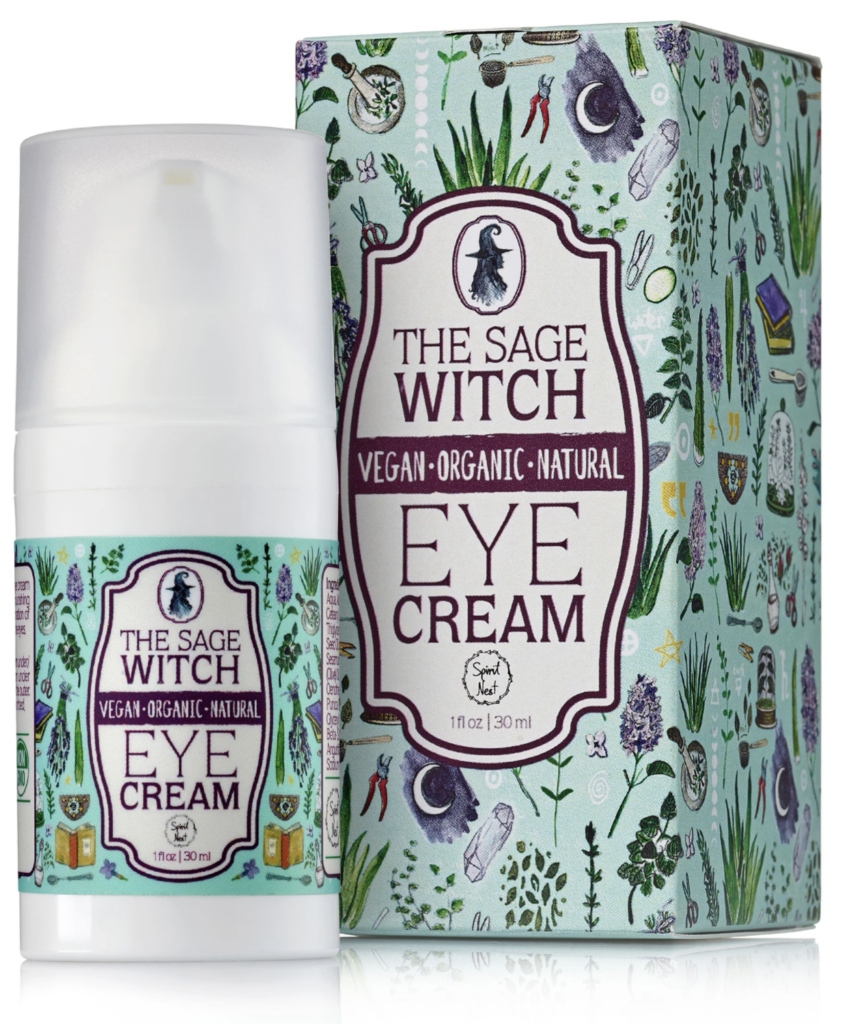
Spirit Nest The Sage Witch Eye Cream
We’ve found that when it comes to naturally treating bags under the eyes, most people prefer a product that absorbs relatively quickly so that they can also apply concealing makeup over the bags shortly thereafter.
The Sage Witch Eye Cream is a crowd favorite for this purpose. The ingredient list is extensive, albeit all natural, meaning there are many potent plants at work to target the appearance of bags. Aloe, squalene and vitamin E oil work rapidly to hydrate the area from deep within the dermis, leaving you free to apply whatever additional coverage you choose for the day.
This is also one of the most affordable organic eye cream formulas on the market.
Best Eye Cream for Puffiness
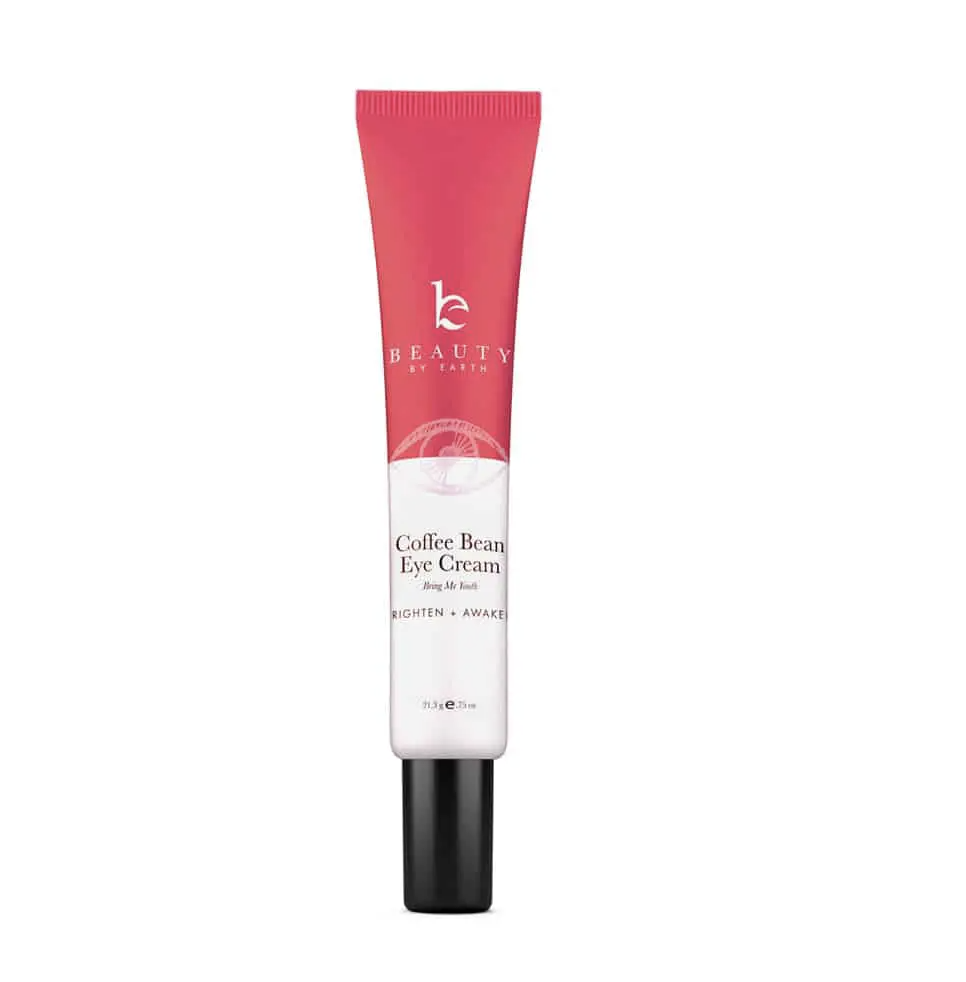
Beauty By Earth Coffee Bean Eye Cream
Beauty by Earth is a natural skincare brand that seems to always produce effective, reliable products that actually do what they claim to do. They’ve found that combining coffee, aloe vera, cucumber, pineapple, sea buckthorn, and cranberry creates a powerful counteractive agent against puffiness, particularly the kind one experiences when waking up in the morning.
These ingredients all have anti-inflammatory properties, so this is a cocktail of dreams in treating under eye inflammation.
Best Anti Aging Eye Cream
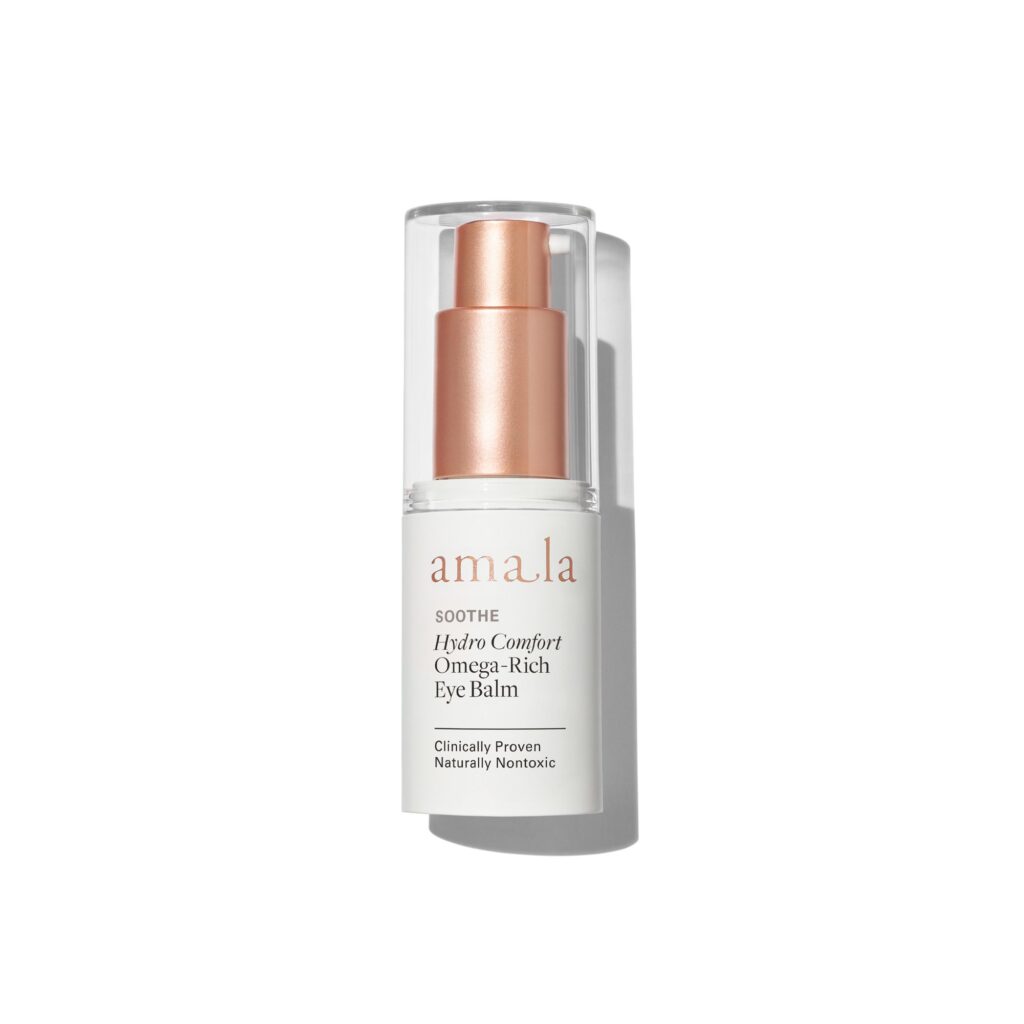
Amala Hydro Comfort Omega-Rich Eye Balm
This all natural eye balm doesn’t come cheap, but if you’re someone with sensitive skin who craves the potency of regular anti-aging products, then it’s well worth the splurge.
Amala has two versions of their eye balms. The hydrating option is organic and vegan, while their ‘Youth Renewing’ option is only organic. The latter is the one that offers the anti-aging properties, while the former is a great option for anyone simply seeking everyday hydration.
Best Hydrating Eye Cream

Nourish Organic Renewing & Hydrating Eye Treatment
Results and affordability come together beautifully in the form of Nourish Organic’s Renewing & Hydrating Eye Treatment.
This formula uses Moroccan, shea and avocado oils to create optimum skin elasticity around the eyes. This happens naturally through intense hydration and replenish. All of the skincare products within the Nourish brand are organic, vegan and free from GMOs, gluten and fragrances.
Best Eye Cream for Sensitive Skin
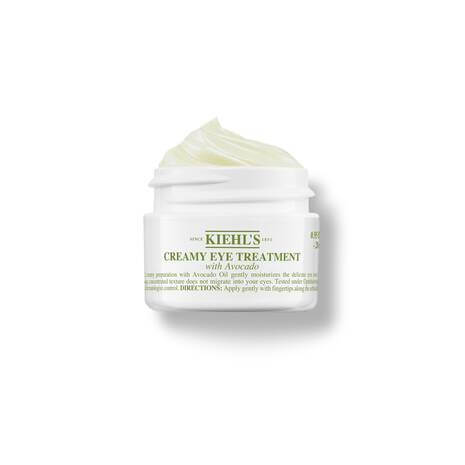
Kiehl’s Creamy Eye Treatment with Avocado
Kiehl’s has made a household name for themselves as the go-to for natural skincare range for everyone seeking to embark on a more sustainable self-care venture. They are a trusted brand, and people with sensitive skin find their products extremely gentle.
The avocado eye treatment is a soft yet potent formula that uses the healing properties of avocado oil to nourish deeply into the small pores of the eyes. A little goes a long way, and a single pot of Kiehl’s can last up to half a year.
DIY Natural Eye Cream at Home
If you take a look at the ingredient list of any natural eye cream, you’ll start to realize that a lot of them could potentially be made in the comfort of your own home, using ingredients likely sitting in your pantry.
When mixing your own natural eye cream, it is generally recommended that one mixes a fresh batch at least once every week. Because these are food-derived ingredients, they start to go off relatively quickly, especially if your cream will be stored in a warmer climate.
Coconut Oil
This recipe isn’t much of a recipe at all. All it takes is cracking open a jar of coconut oil (organic, if possible) and smudging a small amount underneath each eye first thing in the morning, and last thing at night.
Coconut oil is a superfood with powerful nutritional properties. The fatty-acids work as an anti-inflammatory compound, working against puffiness and swelling. In addition to this, coconut oil is also extremely hydrating.
Vitamin E and Aloe Vera DIY Eye Cream
As a duo, aloe vera and vitamin E make a powerful agent for healing even the harshest burns on the skin. Using them as an eye cream, the aloe vera is a firming agent while the vitamin E brings hydration.
You can make this homemade eye cream by mixing equal portions of aloe vera gel and vitamin E oil in a small container. If you prefer to use vitamin E capsules, cut each of them open and portion them to that of your aloe vera gel.
Make a fresh batch of this eye cream once every few days.
Green Tea Bags
The antioxidants found in green tea work wonders on puffy, inflamed skin, especially the thinner skin under the eyes. Repeated use of green tea on eye skin has also been shown to firm and tighten over time. Shalini Seneviratne, a skincare expert, loves a DIY approach to eye cream and says “to combat circles and puffy eyes cool them with cucumber or green tea bags.”
To use green tea on the eyes, prepare a cup of tea and soak two cotton pads in the solution for a few minutes. Place them over the eyes and leave them until cool. Alternatively, submerge two green tea bags in hot water and place the actual bags over the eyes for three minutes.
DIY Shea Butter and Coffee Eye Cream
Coffee is one of the most effective plants in treating puffiness and pigmentation. We use shea butter to make the coffee easily applicable to the skin around the eye.
You’ll first need to brew a pot of coffee of your choice. Allow it to cool, and mix 1/2 a teaspoon into 1 tablespoon of shea butter inside of a saucepan on low heat. The two should melt together.
Allow the mixture to cool before applying it under the eyes. Use it in the morning and evening as part of your regular skincare routine.
Did You Enjoy This Article?
If you enjoyed this article, you might also like our articles on Natural Face Moisturizer, Essential Oils for Skin, Best Natural Deodorant for Women, and Best Natural Anti-Aging Skincare.

